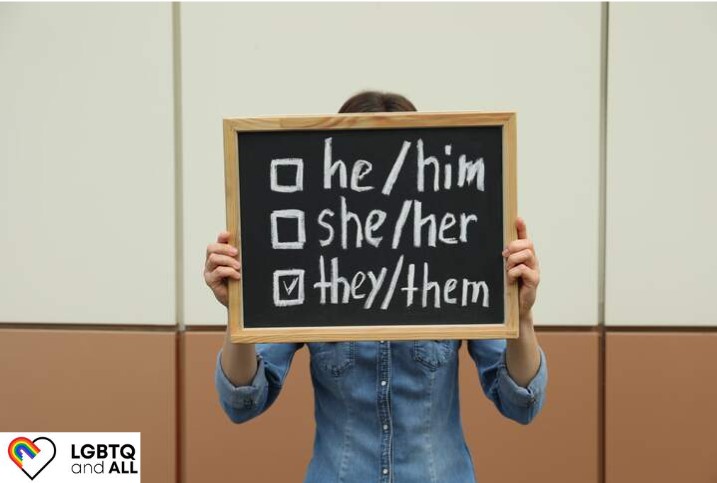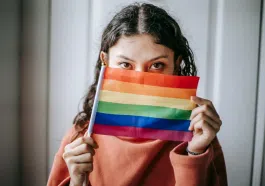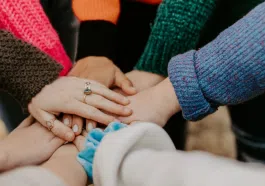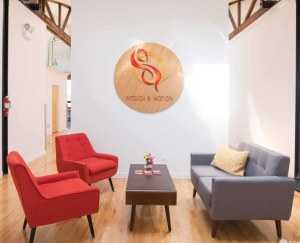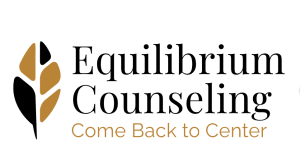Inclusivity and respect for diversity are vital pillars in today’s rapidly evolving society. One aspect that has gained significant attention is the usage of gender pronouns. In this blog post, we will explore the importance of gender pronouns, their significance in the LGBTQ+ community, and how we can create a more inclusive environment for everyone.
Understanding Gender Pronouns
Gender pronouns are words used to refer to individuals in place of their names. They reflect a person’s gender identity and can be he/him, she/her, they/them, or other gender-neutral pronouns. It is crucial to recognize that gender pronouns are not solely limited to binary identities but encompass a spectrum of gender expressions.
Using the wrong gender pronouns can be hurtful and disrespectful, so it is essential to take the time to learn the correct pronouns and use them when appropriate. It is also important to remember that gender pronouns are a personal decision and should never be assumed.
A Grammar Lesson
An adjective replaces a noun in a sentence with a pronoun. These words refer to things or people. In general, pronouns are either singular or plural. In some languages, like English and Spanish, pronouns are gendered. We use “he” for nouns with a male gender, “she” for nouns with a female gender, and “it/they” for nouns with no or indeterminate gender.
Traditionally, “he/she” is used to refer to people in English, assuming that gender is binary and that people are either males or females. There is a spectrum of gender, however. Gender-expansive identities include male, female, nonbinary, genderqueer, genderfluid, and others.
Why use gender pronouns?
What is the point of using gender pronouns? We wouldn’t have to do it if our language didn’t force us to categorize nouns by gender. In English, however, people are traditionally referred to by “he” or “she” so we have to be intentional about our language use.
By referring to people exclusively as “he” or “she,” we imply that gender non-conforming people must either be one or the other. Identity should not be invalidated. In addition to being a form of hostility, using the wrong pronouns consistently to address or refer to someone is also referred to as a microaggression.
The Significance of Gender Pronouns for the LGBTQ+ Community
For individuals within the LGBTQ+ community, gender pronouns play a pivotal role in affirming their identities. Using the correct pronouns demonstrates respect, acceptance, and validation. It helps create an environment where individuals can be seen, heard and acknowledged for who they are.
This can profoundly impact the mental health of LGBTQ+ individuals, as feeling accepted and affirmed can be integral to their self-esteem and well-being. It can also create a sense of community and provide a sense of inclusion.
What Are Some Commonly Used Pronouns?
The pronouns she/her/hers and he/him/his are some of the most commonly used in our society, but people may also use gender-neutral pronouns. One of the most common gender-neutral pronouns is they/them/theirs. It is possible to use these pronouns singularly.
A Guide to Pronouns: What are neopronouns?
Neopronouns are new (neo) pronouns that refer to gender identity. These pronouns are sometimes preferred over those that are more commonly used.
In our language, neopronouns are singular third-person pronouns that are not officially recognized. It is generally considered a gender-neutral set of pronouns. However, some people prefer neopronouns as a gender-neutral alternative pronoun. Also, the singular “they” can be avoided to avoid any confusion.
What Neopronouns Are Used?
Here are some examples of neopronouns:
- Ze/Hir/Hirs
- Ze/Zir/Zirs
- Xe/Xem/Xyr
- Ey/Em/Eir
- Fae/Faer/Faers
A person’s gender can be described using neopronouns. While many believe neopronouns are gender-neutral, they allow users to identify as any gender. However, they are used most often by transgender or gender-nonconforming people.
Many non-binary people find mixed pronouns or pronoun pairs affirming.
For more on understanding pronouns, please read our article here.
Creating a Culture of Pronoun Inclusivity
Here are some ways to create a culture of pronoun inclusivity:
a. Education and Awareness: Promoting education about gender pronouns is vital in fostering inclusivity. Workshops, training sessions, and resources can help educate individuals about the importance of using correct pronouns and provide guidance on respectful communication.
b. Normalizing Pronoun Sharing: Encouraging the practice of sharing pronouns in introductions, email signatures, and social media profiles can help create a norm where individuals feel comfortable expressing their pronouns. This practice also avoids assumptions based on appearance and promotes inclusivity for all.
Respecting Pronoun Preferences
There are many ways you can respect someone’s pronoun preferences. Here are some examples:
a. Active Listening: When someone shares their pronouns, listening and respecting their preferences is essential. Avoid making assumptions or using incorrect pronouns, which can be hurtful and invalidating.
b. Correcting and apologizing: Everyone makes mistakes from time to time. If you mistakenly use a pronoun for someone, say something right away, such as “Sorry, I meant (insert pronoun). “
It is best to apologize privately if you find out later that you made a mistake.
It is often easy to dwell on your mistakes or how difficult it is for you to get it right. Don’t do that! As a result, the misgendered person feels awkward and responsible for comforting you, which is not their responsibility.
Takeaway
Embracing gender pronouns is a powerful step towards creating an inclusive society for all. By understanding the significance of gender pronouns, respecting individual preferences, and actively incorporating pronoun inclusivity into our daily lives, we can foster a culture that values and uplifts the identities of every individual.
For more LGBTQ+ content, be sure to stay up-to-date on our Lifestyle Blog.

